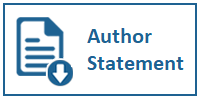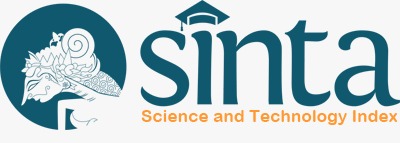Optimizing CV Matching with Job Vacancies Using the Boyer-Moore Algorithm
Abstract
According to a survey conducted by a public survey agency, there was a decline in percentage from 37% to 20%, indicating a gap still exists between skills required by the job market and those possessed by job seekers. To address this issue, this study aims to assess the alignment between data from curriculum vitae (CV) and job vacancies. Boyer-Moore algorithm is implemented through a web-based system. System extracts text from a PDF file, which is used in the application of Boyer-Moore algorithm. System also retrieves selected job vacancy data and generates keywords using YAKE (Yet Another Keyword Extractor). Before processing with Boyer-Moore algorithm, all data undergoes pre-processing. Algorithm's output is either a "match found" or "no match found." Similarity score is determined by dividing number of matching keywords by total number of keywords. Additionally, system recommends other job options, aiming to suggest alternative vacancies that may better match the CV. Recommendations based on highest percentage of keyword matches from all job vacancy data stored in the system, which are sorted accordingly. Boyer-Moore algorithm was successfully implemented in the job vacancy system, and the system's performance evaluation, using 100 job vacancy data entries, yielded an average processing time of 2.84 seconds.
Downloads
Additional Files
Published
How to Cite
Issue
Section
License
Copyright (c) 2025 Eunike Endariahna Surbakti

This work is licensed under a Creative Commons Attribution-ShareAlike 4.0 International License.
Authors retain copyright and grant the journal right of first publication with the work simultaneously licensed under a Creative Commons Attribution-ShareAlike International License (CC-BY-SA 4.0) that allows others to share the work with an acknowledgement of the work's authorship and initial publication in this journal.
Authors are able to enter into separate, additional contractual arrangements for the non-exclusive distribution of the journal's published version of the work (e.g., post it to an institutional repository or publish it in a book), with an acknowledgement of its initial publication in this journal.
Copyright without Restrictions
The journal allows the author(s) to hold the copyright without restrictions and will retain publishing rights without restrictions.
The submitted papers are assumed to contain no proprietary material unprotected by patent or patent application; responsibility for technical content and for protection of proprietary material rests solely with the author(s) and their organizations and is not the responsibility of the ULTIMATICS or its Editorial Staff. The main (first/corresponding) author is responsible for ensuring that the article has been seen and approved by all the other authors. It is the responsibility of the author to obtain all necessary copyright release permissions for the use of any copyrighted materials in the manuscript prior to the submission.















